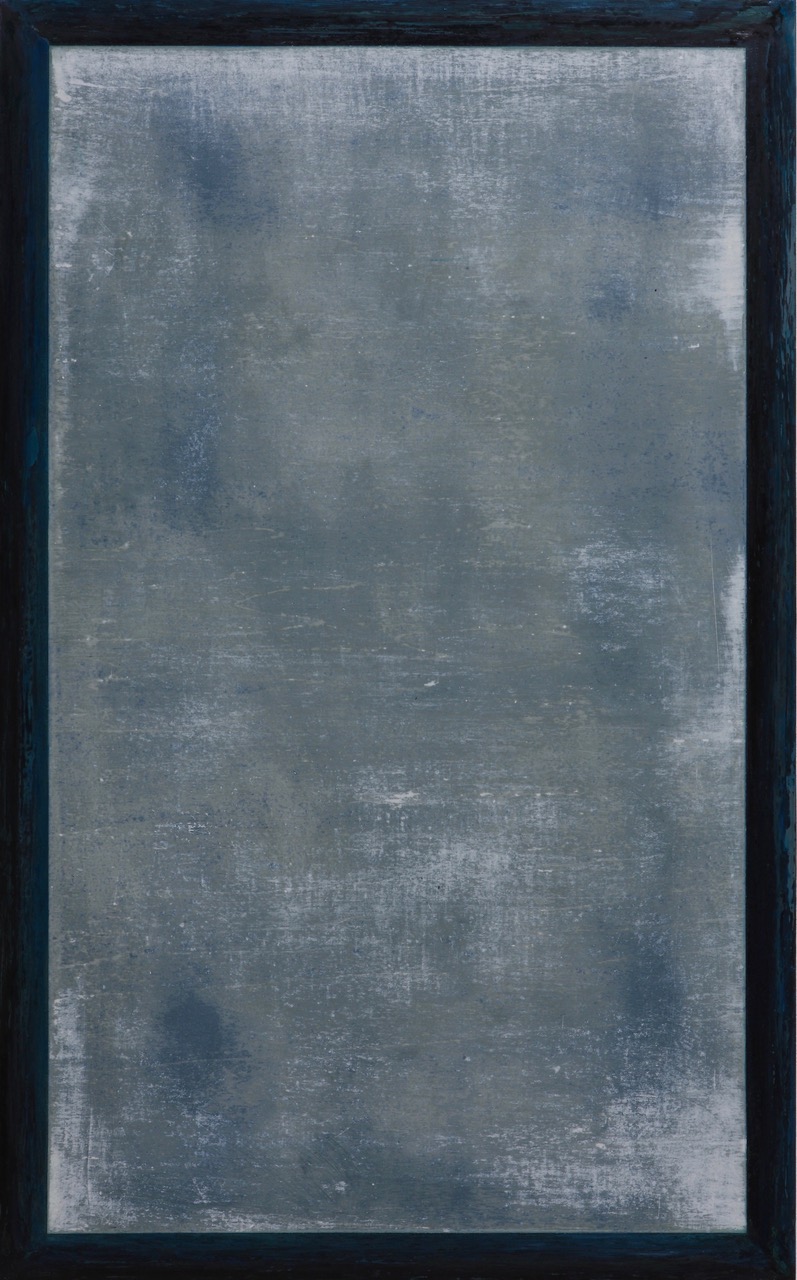Black ice is what they call a specific quality of ice. Quickly frozen, it remains clear. It is extremely sleek yet stable. Black ice is transparent. Most of the light is not reflected but, instead, penetrates the water beneath the ice. As the light is absorbed by the water below the ice, the surface of the frozen lake appears black.
The frozen surface of the water is transformed into a vibrating skin. Just seemingly rigid, the icy coat permanently moves, it is a permanent process. It scrunches, it cracks. It is buzzing and droning. The lake resembles a gigantic drum.
To speed around upon this frigid drum, so to speak out of reach of the dark abyss, is a very special dance for the skaters.
Black ice is slippery like the surface of a mirror. Skating upon this drumhead is emblematic for a defiant life. So tempting; to dance atop this likely fragile glass. Separated only by a thin shimmering skin, one simultaneously experiences the of depth of the water and the deadly abyss.
Upon the frozen water table the skaters are writing their signatures. Their traces are ephemeral self-assertion.
The self, reflected in the mirror, features a short-time half-life. The tattoo by the skater is melting by the time. The marks fade away just as the self-awareness.
„Clear ice, a paradise to those, who know to dance well“ (*1) the philosopher speaks. `cause there is no footing for granted. All may break, all may slip. „Black ice“ appeared to me as words from a cryptic nursery-rhyme: „Dunkel war´s, der Mond schien helle…“
Black and White. Poles of luminance, light and night, antitheses, linked fatefully.
„Grisaille“ a painting technique in which the artist works only in shades of grey.
The resources for the painter in fact are colours.
We insinuate emotional essence to so-called deep tone colours. In opposition to this concept, Contrarily, grey is considered to be prosaic, if not dismal.. It is located between Black and White. It´s valued to be neither fish nor fowl. A dead center. When light and darkness equal in a twinkling of an eye, grey could be. The motivation for painting a „Grisaille“ is to vindicate grey from this verdict. Committed to this voluntary limitation painters like to show the infinite possibilities to nuance, which is premise to perception.
In Occidental art this style of painting exists since the 13th century, an example
being the use of grisaille on the shutter of a winged altar.
….Don Luigi did kiss the Bishops hand. „I ordered“ ,the bishop said „ just this single light…“ and pointed to a five-branched candelabra, which was left upon the desk by the butler.
With the following move the Bishop pointed to the other chair, Don Luigi took a seat.
„… hopefully“ the Bishop said, „it isn´t too dark for you. I enjoy observing when it darkens. I have no idea, wether you ever noticed this. Nothing extraordinary, but it attracted my attention:
Now, in spite of the candlelight, the room is darker than the outside. The windows are cutting bright rectangles into the wall. In one hour at the latest the light of this five candles will be brighter, because outside it will be night. Then the windows will be black rectangles in a bright wall.
Believe me, I´ve never been able to notice this very moment, when light, if you can say so, capsizes itself. There must be a moment, when light is not entering from outside, but at the same time it isn´t floating out as well. But it always happens like this: you write, you talk to someone, you think or pray – and as you look up it already happened“ (*2)
This text poetically illustrates the way in which sometimes magic moments escape our cognition. We fail to perceive the subtle beauty of a lighthearted moment, for example, during the daily grind of routine.
The capability for being amazed in everyday occurrences is required, hence a the simple rectangle of a window turns into a sluice for the tides of light.
On frozen lake, sport is done, skids are scratching, crackling traces.
Drumhead and resonating room together are becoming tone. In its contrariness energy lives.
(*1) excerpt from: „Die Fröhliche Wissenschaft“ Friedrich Nietzsche
(*2) excerpt from: „Das Zwergenschloß“, Herbert Rosendorfer
